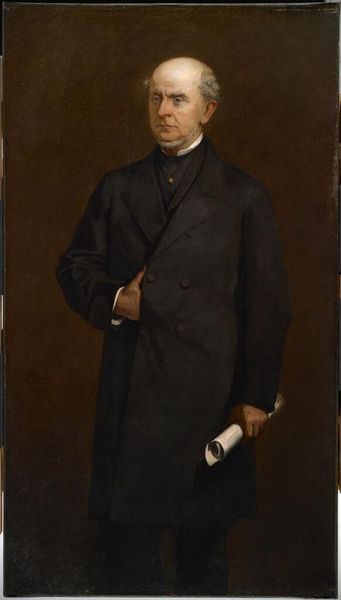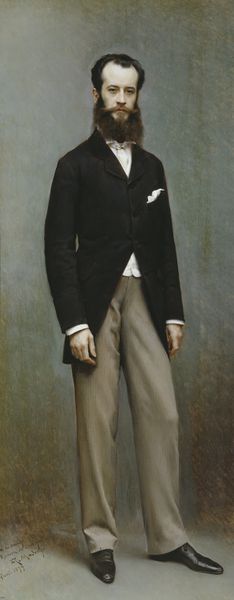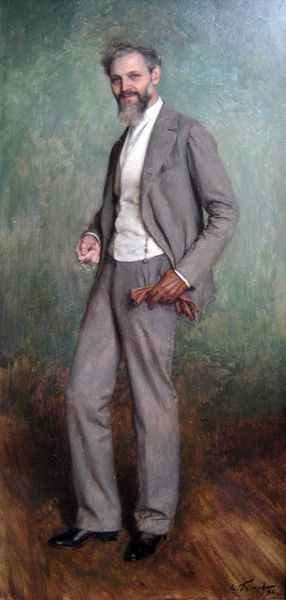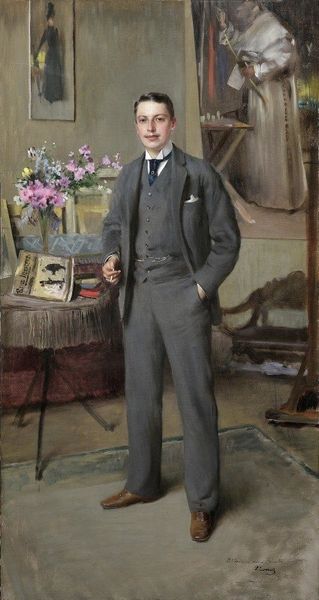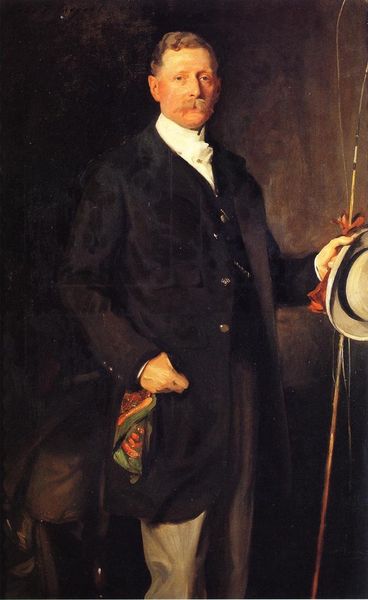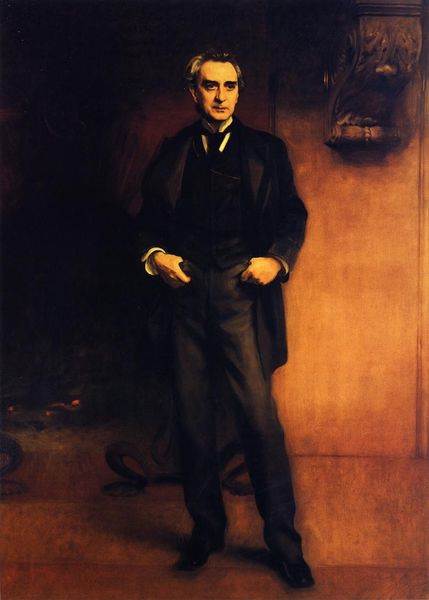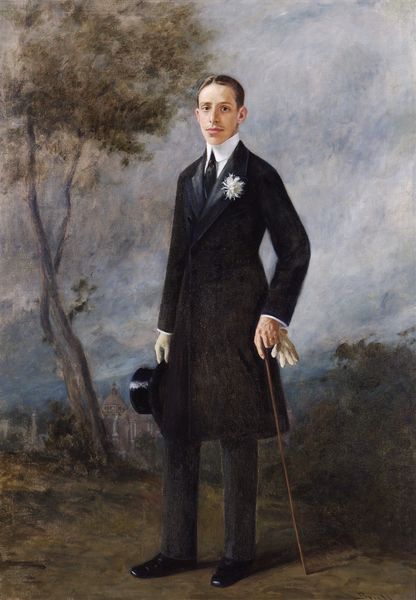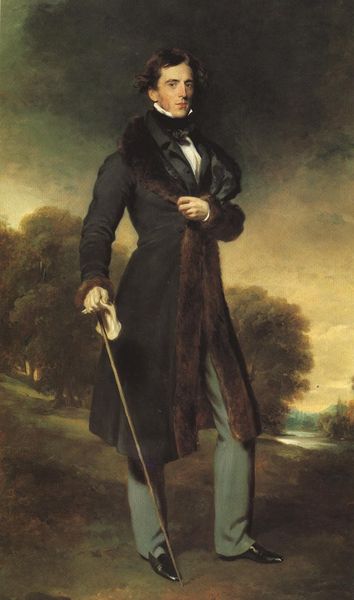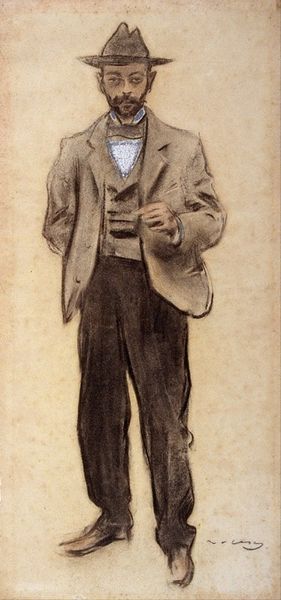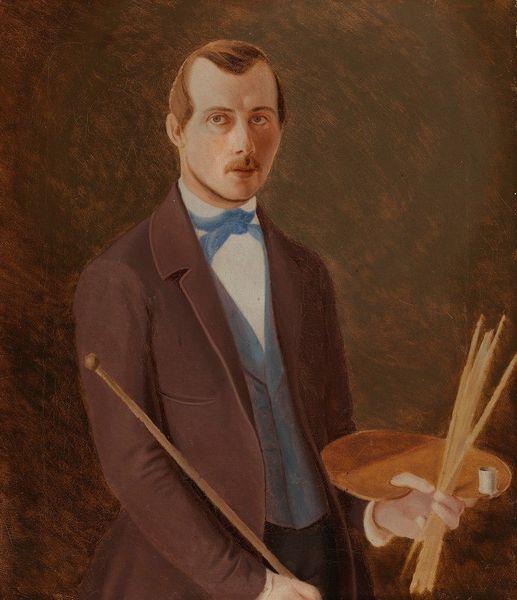
oil-paint
#
portrait
#
oil-paint
#
genre-painting
#
academic-art
#
realism
Copyright: Public domain
Editor: So, here we have Eduard von Gebhardt's "Bildnis eines Malers vor der Staffelei," or "Portrait of a Painter Before the Easel," painted in 1881, with oil paints. The sitter's attire really grabs you, it seems intentionally posed. What historical context can we explore in this artwork? Curator: Considering the social dynamics of the art world in 1881, we should observe how the artist has carefully presented this painter. His clothing isn't simply functional, it indicates a particular status and a desire for acceptance within established artistic circles, no? He's staging his artistic identity. Editor: Yes, the formal wear does lend a certain gravity, contrasting with the working painter's attire one might expect. Does the painting-within-a-painting offer another layer of meaning, maybe a nod to art history? Curator: Precisely. The presence of the painting on the easel is crucial. It's not just a prop; it's an active assertion of the painter's connection to artistic tradition, perhaps referencing specific masters. Are we, perhaps, meant to read something specific into the image being created? What do you make of the landscape visible behind the sitter, which almost appears as stagecraft? Editor: That's an interesting point. It seems the backdrop enhances this curated version of himself. Could it be seen as a romanticized vision, a commentary on how artists wished to be perceived in the public eye? Curator: That’s definitely plausible. Think about the rising importance of art academies and exhibitions at this time. The painter's public persona was becoming increasingly significant, so the painting becomes a deliberate construction of self, tailored for that public consumption and acceptance within those artistic institutions. It underscores art's role in shaping identity, and vice versa. Editor: It's amazing to see how this portrait functions as a careful construct shaped by historical and social forces. Thanks for the illuminating points on context! Curator: Absolutely, this exercise helps unveil how intertwined art, identity, and public perception truly are.
Comments
No comments
Be the first to comment and join the conversation on the ultimate creative platform.
